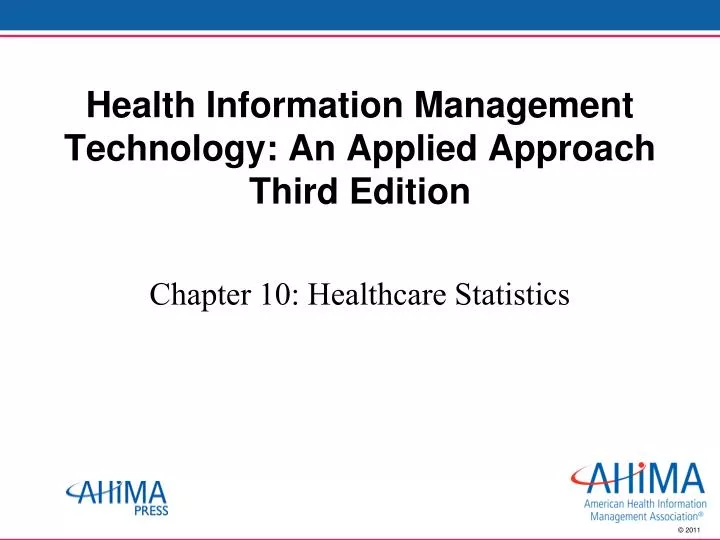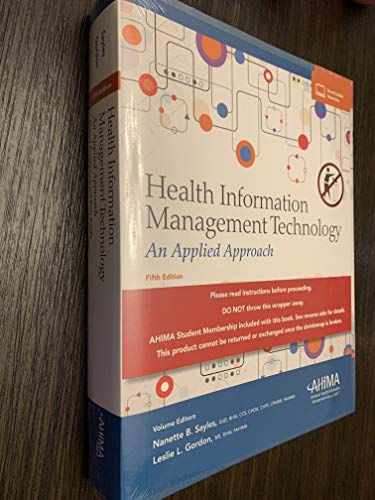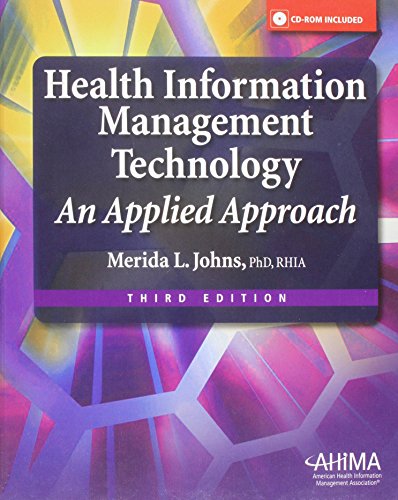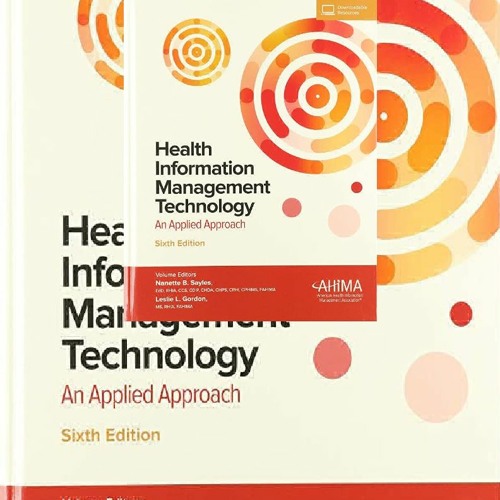Health Information Management Technology: An Applied Approach

Imagine walking into a bustling doctor's office, not met by towering stacks of paper files, but instead a seamless ballet of digital information flowing between computers and tablets. Nurses access patient histories instantly, doctors review test results on secure screens, and administrators efficiently manage appointments and billing. This is the promise, and increasingly the reality, of Health Information Management (HIM) technology, a field quietly revolutionizing healthcare behind the scenes.
At its core, HIM technology is about harnessing the power of digital tools to manage and protect patient health information. This article delves into the applied aspects of HIM technology, exploring its crucial role in modern healthcare, the skills required to thrive in this field, and its ongoing evolution to meet the ever-changing demands of a data-driven world.
The Foundation: From Paper to Pixels
The evolution of healthcare from paper-based records to electronic health records (EHRs) has been a monumental shift. Before the digital age, patient information was often fragmented, difficult to access quickly, and vulnerable to loss or damage.
The introduction of EHRs marked a turning point, enabling healthcare providers to consolidate patient data into a single, secure electronic system. This transformation has not only streamlined administrative processes but also significantly enhanced the quality of patient care.
According to a report by the Office of the National Coordinator for Health Information Technology (ONC), the adoption of EHRs has led to improved care coordination, reduced medical errors, and increased patient engagement. The move towards digital records is a fundamental change that benefits both providers and patients.
Key Components of HIM Technology
HIM technology encompasses a wide range of applications and tools, each designed to manage and protect health information. These components work in concert to ensure data integrity, security, and accessibility.
Electronic Health Records (EHRs) are the cornerstone of HIM technology, providing a centralized repository for patient data. EHRs include medical history, diagnoses, treatment plans, medications, allergies, and other relevant information.
Clinical Documentation Improvement (CDI) systems play a crucial role in ensuring the accuracy and completeness of clinical documentation. CDI specialists use technology to identify areas where documentation can be improved, leading to better coding and reimbursement.
Revenue Cycle Management (RCM) systems manage the financial aspects of healthcare, from patient registration to claims processing and payment. These systems streamline billing processes, reduce errors, and improve revenue collection.
Data analytics tools are used to analyze health data, identify trends, and improve patient outcomes. These tools enable healthcare organizations to make data-driven decisions and optimize their operations.
The Human Element: Skills and Expertise
While technology is the engine of HIM, skilled professionals are the drivers. They ensure that systems are implemented effectively, data is protected, and information is used appropriately.
HIM professionals need a diverse skill set, including technical expertise, analytical abilities, and strong communication skills. They must understand healthcare regulations, coding systems, and data security protocols.
According to the American Health Information Management Association (AHIMA), key roles in HIM include health information managers, medical coders, clinical documentation improvement specialists, and data analysts. Each role requires specialized training and certification.
Health information managers oversee the management of health data and information systems. They develop and implement policies and procedures to ensure data integrity, security, and compliance with regulations.
Medical coders assign codes to diagnoses, procedures, and services for billing and reimbursement purposes. They must have a thorough understanding of coding systems such as ICD-10 and CPT.
Clinical documentation improvement specialists work to improve the accuracy and completeness of clinical documentation. They review patient records, identify documentation gaps, and work with providers to improve documentation practices.
Data analysts analyze health data to identify trends, improve patient outcomes, and optimize healthcare operations. They use statistical software and data visualization tools to present their findings to stakeholders.
Education and Training
A career in HIM typically requires a bachelor's or master's degree in health information management or a related field. These programs provide students with the knowledge and skills needed to succeed in this dynamic field.
Certification is also important for HIM professionals. AHIMA offers several certifications, including Registered Health Information Administrator (RHIA) and Registered Health Information Technician (RHIT).
These certifications demonstrate that individuals have met certain standards of competence and are committed to ongoing professional development.
The Future of HIM Technology
HIM technology is constantly evolving to meet the changing needs of the healthcare industry. Emerging trends such as artificial intelligence (AI), blockchain, and telehealth are transforming the way health information is managed and used.
AI is being used to automate tasks, improve accuracy, and enhance decision-making in healthcare. For example, AI-powered tools can be used to analyze medical images, identify potential diagnoses, and personalize treatment plans.
Blockchain technology is being explored as a way to improve data security and interoperability in healthcare. Blockchain can be used to create a secure, decentralized record of patient data that can be shared among authorized providers.
Telehealth is expanding access to healthcare services, particularly for patients in rural or underserved areas. HIM technology plays a crucial role in supporting telehealth by enabling secure transmission of patient data and remote monitoring of patients' health.
The increasing focus on data privacy and security is also shaping the future of HIM technology. Healthcare organizations are investing in technologies to protect patient data from cyber threats and comply with regulations such as HIPAA.
According to a report by MarketsandMarkets, the global health information technology market is projected to reach $390.7 billion by 2024, driven by factors such as increasing adoption of EHRs, rising demand for telehealth services, and growing concerns about data security.
This growth underscores the importance of HIM technology in modern healthcare and the opportunities it presents for skilled professionals.
The Bigger Picture: Impact on Healthcare
The impact of HIM technology extends far beyond administrative efficiency. It has the potential to transform healthcare delivery, improve patient outcomes, and reduce healthcare costs.
By providing healthcare providers with access to accurate and timely information, HIM technology enables them to make better-informed decisions. This can lead to more accurate diagnoses, more effective treatments, and improved patient safety.
HIM technology also empowers patients by giving them greater control over their health information. Patients can access their medical records online, track their health progress, and communicate with their providers more easily.
The use of data analytics in HIM can help healthcare organizations identify trends, improve quality of care, and reduce costs. For example, data analytics can be used to identify patients at risk for readmission, optimize resource allocation, and prevent medical errors.
"Health information technology is critical to improving the quality, safety, and efficiency of healthcare," said Karen DeSalvo, former National Coordinator for Health Information Technology. Her statement underscores the pivotal role of HIM in advancing healthcare.
Looking Ahead: A Call to Action
As healthcare continues to evolve, the demand for skilled HIM professionals will only increase. Individuals interested in a challenging and rewarding career in healthcare should consider pursuing education and training in HIM technology.
Healthcare organizations should invest in HIM technology and support the professional development of their HIM staff. By embracing technology and investing in their workforce, organizations can improve the quality of care they provide and achieve better patient outcomes.
The digital transformation of healthcare is well underway, and HIM technology is at the forefront of this revolution. By embracing innovation, fostering collaboration, and prioritizing patient needs, we can unlock the full potential of HIM technology to create a healthier future for all.
The integration of technology in healthcare is not just about efficiency; it's about improving lives. It is a testament to the power of human ingenuity and collaboration to create a better world.














![Health Information Management Technology: An Applied Approach PPT - [PDF] DOWNLOAD Health Information Management Technology: An](https://image7.slideserve.com/12532807/health-information-management-technology-l.jpg)
![Health Information Management Technology: An Applied Approach PPT - READ [PDF] Health Information Management Technology with Online](https://image7.slideserve.com/12501936/bestselling-new-book-releases-health-information-l.jpg)


